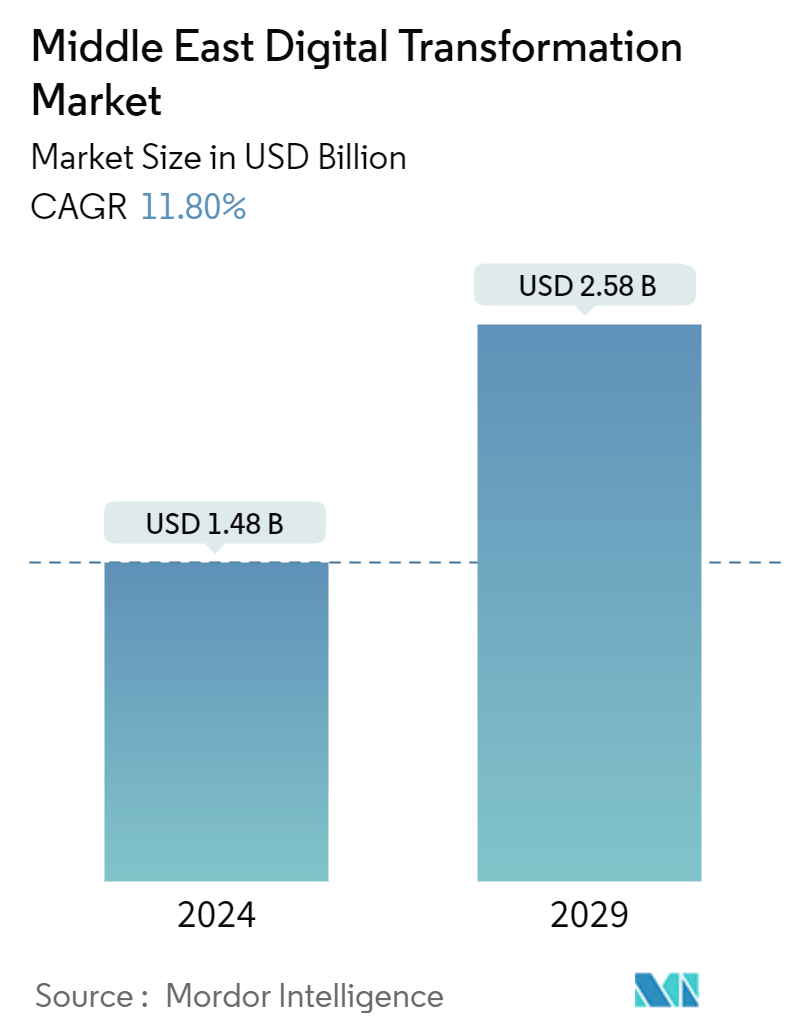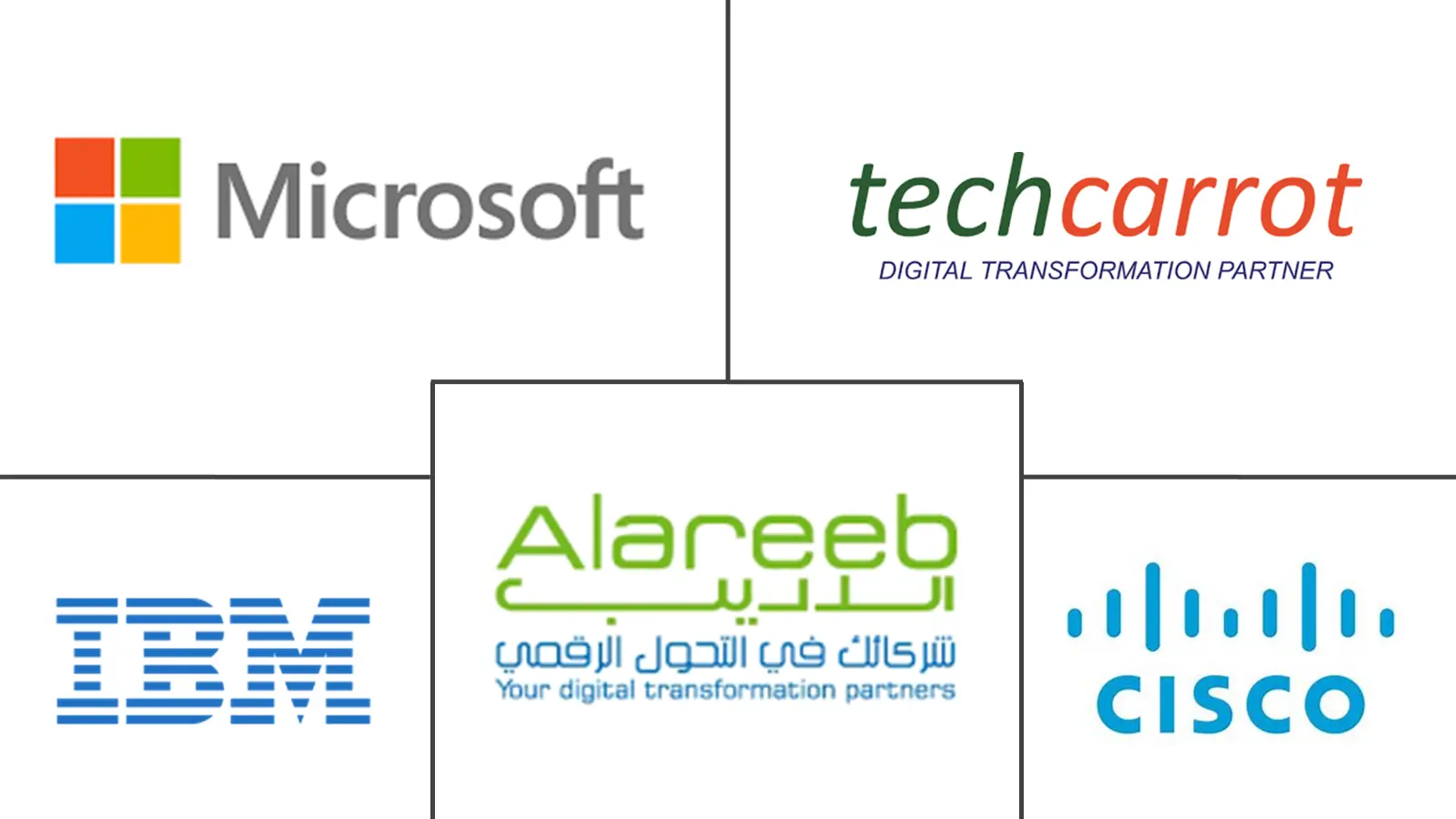Market Size of Middle East Digital Transformation Industry

| Study Period | 2019 - 2029 |
| Base Year For Estimation | 2023 |
| Market Size (2024) | USD 1.48 Billion |
| Market Size (2029) | USD 2.58 Billion |
| CAGR (2024 - 2029) | 11.80 % |
| Market Concentration | Low |
Major Players
*Disclaimer: Major Players sorted in no particular order |
Middle East Digital Transformation Market Analysis
The Middle East Digital Transformation Market size is estimated at USD 1.48 billion in 2024, and is expected to reach USD 2.58 billion by 2029, growing at a CAGR of 11.80% during the forecast period (2024-2029).
- The Middle East is undergoing a rapid digital transformation driven by government initiatives, a young, tech-savvy population, and a desire for economic diversification. This shift presents a significant opportunity for businesses and investors alike.
- The advent of Industry 4.0 signifies a transformative era where billions of people are interconnected through mobile devices, harnessing advanced technologies such as artificial intelligence (AI), robotics, and nanotechnology. This revolution presents limitless possibilities for innovation and efficiency. The Middle East is actively embracing this digital transformation, positioning itself to gain substantial advantages in various sectors, including healthcare, education, and industry. By integrating these emerging technologies, the region aims to enhance productivity, drive economic growth, and improve the quality of life for its citizens.
- Several nations in the region are actively pursuing comprehensive economic diversification initiatives to lessen their dependence on oil and gas revenues. Notably, Bahrain, Saudi Arabia, and the United Arab Emirates have unveiled detailed economic blueprints emphasizing a substantial integration of advanced technologies. These strategies foster sustainable growth, enhance competitiveness, and create new job opportunities across various sectors.
- The region's manufacturing sector is experiencing significant growth, driven by population growth, urbanization, and increasing consumer demands. This expansion presents opportunities for digital transformation as manufacturers focus on enhancing productivity, quality, and operational efficiency. Thus, adopting digital technologies enables manufacturers to meet market demands.
- In Saudi Arabia and the United Arab Emirates, the governments have prioritized the development of the manufacturing sector. The United Arab Emirates has launched "Operation 300bn," a strategic initiative targeting a GDP contribution of AED 300 billion from the industrial sector by 2031. Embracing innovation, both nations, especially the United Arab Emirates, are leveraging technologies like artificial intelligence to propel their industries forward.
- Although the younger demographic often displays strong technological skills, a significant portion of the population still grapples with digital literacy. This creates a pronounced digital divide, highlighting the urgency for educational initiatives and skill-building programs.

